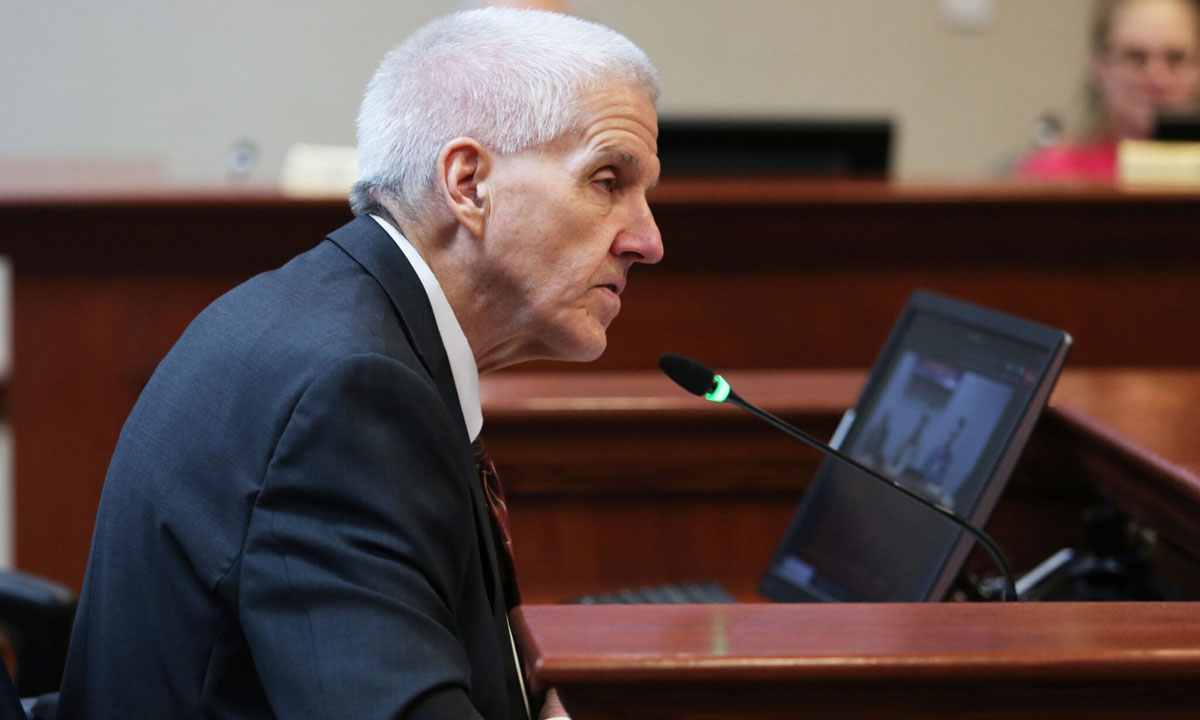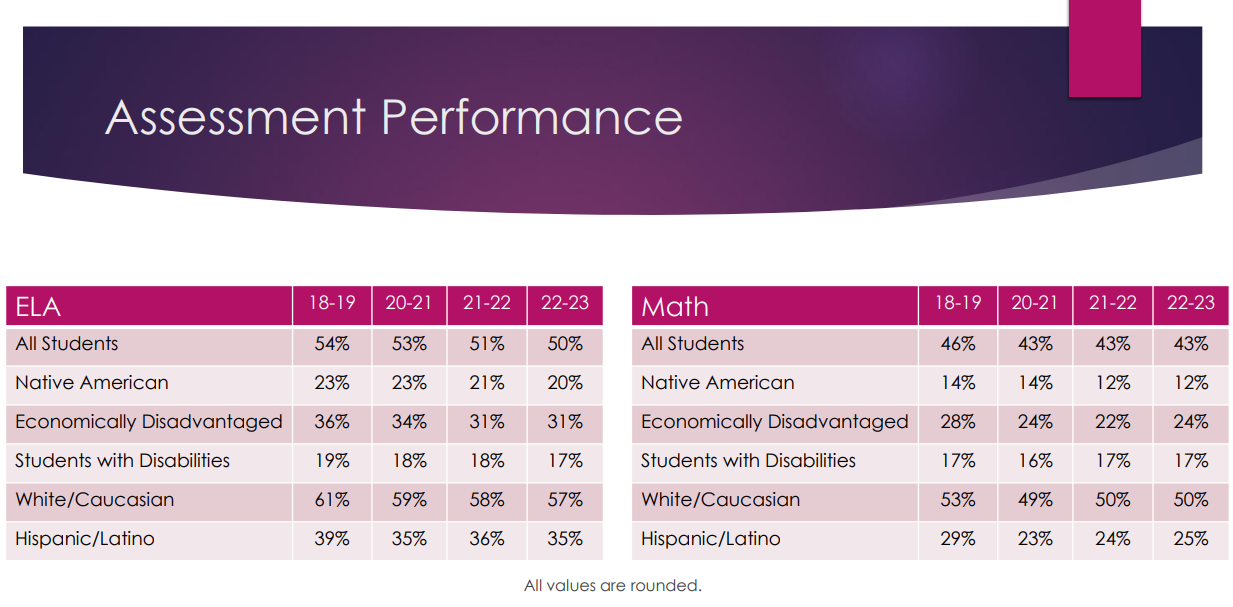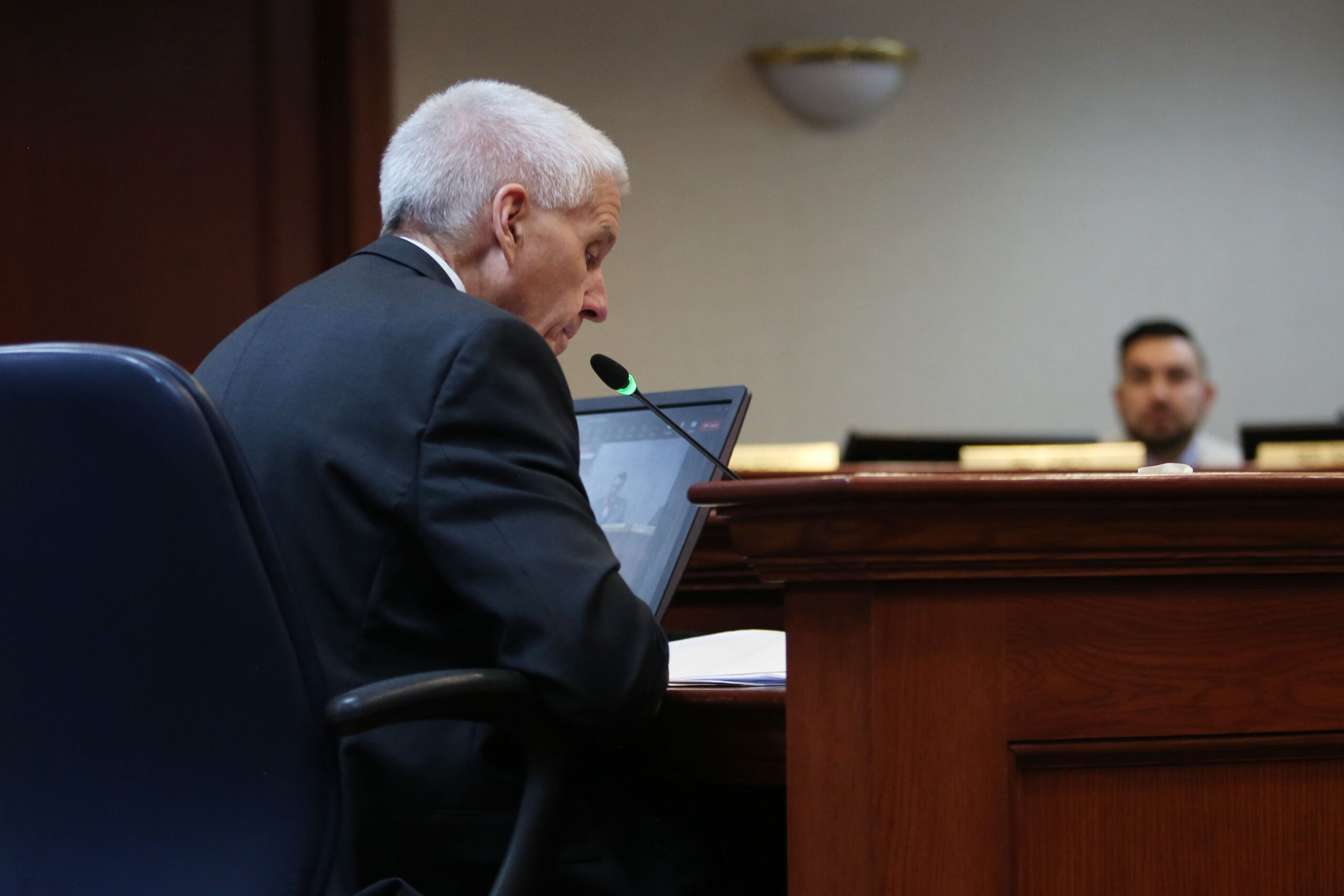South Dakota Gov. Noem’s Phonics Literacy Effort Advances in Legislature
Graves called whole language teaching a “vague” and “loosey-goosey” method based on the idea that children will naturally learn to read.

Get stories like these delivered straight to your inbox. Sign up for The 74 Newsletter
PIERRE — The state House Education Committee unanimously voted Wednesday at the Capitol to support Gov. Kristi Noem’s $6 million effort to train teachers in phonics literacy. The bill now goes to the Joint Appropriations Committee.
The effort, spearheaded by the state Department of Education, provides extensive professional development to teachers in what the bill calls the “Science of Reading.” It extends to training for public school, private school and tribal teachers.
The legislative ask is a continuation of the department’s literacy program that started in 2023 and was paid for by federal COVID relief funds. Those funds expire by September. The $6 million would continue the program for the next four years and will offer training to all elementary schools and teachers in the state.
“In four years, when the money runs out, we’re hoping and believe that the need for the money will as well,” Department of Education Secretary Joseph Graves told lawmakers.
Half of all South Dakota students aren’t proficient in English Language Arts exams, according to assessment data from the 2022-2023 school year. According to the latest national KIDs Count report, 68% of South Dakota fourth graders aren’t proficient in reading – an increase of four percentage points since 2021.
Early literacy skills are closely linked to reading achievement throughout school and adulthood, and experts argue reading could be the most important skill needed for success as an adult, according to the department. People who can’t read are less likely than others to vote, read the news or be stably employed.
The bill was widely supported by education lobbyists and did not have any opponent testimony.
The bill follows a global debate – often called the “reading wars” – about how best to teach children to read. One side advocates for an emphasis on phonics, which is understanding the relationship between sounds and letters, while the other side prefers a “whole language” approach that puts a stronger emphasis on understanding meaning, with some phonics mixed in.
Graves called whole language teaching a “vague” and “loosey-goosey” method based on the idea that children will naturally learn to read. Critics of phonics-based instruction argue that phonics lessons are boring, prevent children from learning to love reading and distract from the ability to understand meaning in text.

“Proficiency rates in literacy fell (across the nation), and it quickly became clear that elementary schools filled with whole language teaching resulted in Johnny not being able to read,” Graves told lawmakers.
The Science of Reading program comes from “gold standard research” and “huge statistical meta-analyses” pointing to five foundational components of literacy education, Graves said: phonemic awareness, phonics, vocabulary, fluency and comprehension.
Most of South Dakota’s teachers who were trained in phonics before “whole language” and “balanced literacy” was the standard have retired.
Jennifer Macziewski, a first grade teacher in Rapid City, received Science of Reading training three years ago through a state grant. The training was a two year course, so she just started implementing the instruction for her classroom this year.
Macziewski has been teaching for 13 years, she told South Dakota Searchlight after the committee meeting. About 75% of her students typically finished the school year having reached the literacy proficiency benchmark prior to the Science of Reading instruction. About 40% reached that benchmark by the end of the first semester.

She credits that anticipated success to the change in teaching.
“That’ll open a lot of doors for them,” Macziewki said. “Typically it would take them longer to learn to read, but I already have some kids who’ve hit the third grade benchmark. They’re going to start reading to learn instead of learning to read now, which will free up resources for teachers to help students who haven’t met those benchmarks yet.”
The new instruction is explicit and systematic and “opens up the code of reading” to children so they can decipher words “as long as they can memorize that secret code.”
“Instead of students having to learn thousands of words by memorizing them, they just have to memorize 100 or so unique words,” Macziewki said. “There’s an improvement in their writing too because they better understand the language, are able to break apart sounds and break down the words.”
English Language Arts standards will be up for review across the state beginning in 2024. Students are currently tested in English Language Arts standards in third through eighth grade, and in 11th grade.
The South Dakota Board of Regents plans to focus on the Science of Reading in teacher preparation programs across the state as well, Graves said, adding that if the state is going to improve its reading proficiency scores, then this type of support is needed.
“As we do this and as we continue to offer the training to teachers, we’re convinced the data will quickly demonstrate SOR’s efficacy,” Graves said. “Teachers in schools which adopt it will show increasing reading proficiency rates while those who do not will be left behind and thereby nudged into pursuing this effective program.”
Two other education bills died in the House committee on Wednesday.
One bill would have established a grant program for 30 new South Dakota teachers as a way to incentivize graduating students to stay in-state or encourage out-of-state educators to move to South Dakota.
The second bill would have established qualifications for future members of the Board of Education Standards, with a majority of the seven-member board having a professional background in education.
South Dakota Searchlight is part of States Newsroom, a network of news bureaus supported by grants and a coalition of donors as a 501c(3) public charity. South Dakota Searchlight maintains editorial independence. Contact Editor Seth Tupper for questions: info@southdakotasearchlight.com. Follow South Dakota Searchlight on Facebook and Twitter.
Get stories like these delivered straight to your inbox. Sign up for The 74 Newsletter

